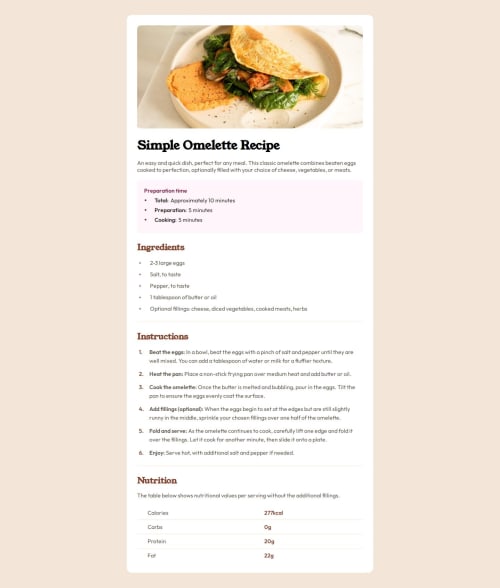
Solution retrospective
I learned a lot from this challenge.
Had different issues in CSS:
-
Adjusting the space between the list items and its markers.
- This requires using the list styling
list-style-type:noneand using::beforepseudo selector to make the markers myself so I can manage them as I want and adjust the spacing as needed.
- This requires using the list styling
-
In the mobile design, the image is full width which I didn't notice at first and my styling needed some refactoring to make it work in both desktop and mobile views.
-
A weird behaviour of the
bodyelement's height isn't enough for the content inside it which causes overflow and layout issues although its height property was set to100%. Changing theheighttoautoresolved this issue.- This causes no margin or any space around the body content which makes the content stick to the edges but I needed the content to breath a little. So, I used margin with a percentage value to the
mainelement which is much better now.
- This causes no margin or any space around the body content which makes the content stick to the edges but I needed the content to breath a little. So, I used margin with a percentage value to the
Overall, I'm happy with the result.
Hope you are too!
Edit: changed height: auto to min-height: 100vh on body element.
If you have any suggestions or fixes, I would appreciate it.
Please log in to post a comment
Log in with GitHubCommunity feedback
- @Veena-K-Venugopal
Good job on the solution! I also found setting
heighttoautohelpful in correcting the vertical layout.
Join our Discord community
Join thousands of Frontend Mentor community members taking the challenges, sharing resources, helping each other, and chatting about all things front-end!
Join our Discord